About Moulin Rouge, Paris’ Iconic Cabaret
The Moulin Rouge is the world’s most famous cabaret, with more than 130 years of history. Located at the foot of Montmartre, in the 18th Arrondissement of Paris, the Moulin Rouge is one of the top tourist attractions of Paris at night.
The history of Moulin Rouge starts at the end of the 19th century. Founded by the businessmen Joseph Oller and Charles Zidler, Le Bal du Moulin Rouge (its former name) opened its doors on 6 October 1899. After the War of 1870, the Parisians were in need of debauchery and parties, and Le Bal du Moulin Rouge provided just that.
Extravagant and original, with stunning decoration, a gigantic dance floor, and fantastic shows inspired by the circus world, the Moulin Rouge became, in just a few months, the place where bourgeois from all over the capital mingled with girls of loose morals and Pigalle’s bad boys.
The Moulin Rouge Paris offers different options:
- Cabaret show + glass of champagne
- Cabaret show + dinner (different menus, also vegetarian and vegan menus)
Save Money! Here are two bundles that include the Moulin Rouge:
Today, the Moulin Rouge has lost almost nothing of its grandeur except for its offhanded beginnings. It remains one of the best cabarets in Paris and a magical place to see great performances and the famous French cancan dance.
Is Moulin Rouge worth it? YES! Unfortunately, I cannot share pictures of the show because photography inside is forbidden, but the Moulin Rouge is about dazzling costumes, talented dancers, fun numbers, and jaw-dropping acrobatic acts. Go on reading for the quirkiest facts about this iconic place in Paris.
The Moulin Rouge is one of the top things to see in Paris. I recommend visiting the Moulin Rouge in the following Paris itineraries:
Moulin Rouge History and Facts
Do you want to know more about this iconic attraction in the French capital, the quirkiest Moulin Rouge facts? Here’s what nobody told you about the Moulin Rouge, Paris.
1. Moulin Rouge’s Architecture Recalls Montmartre’s Rustic Past
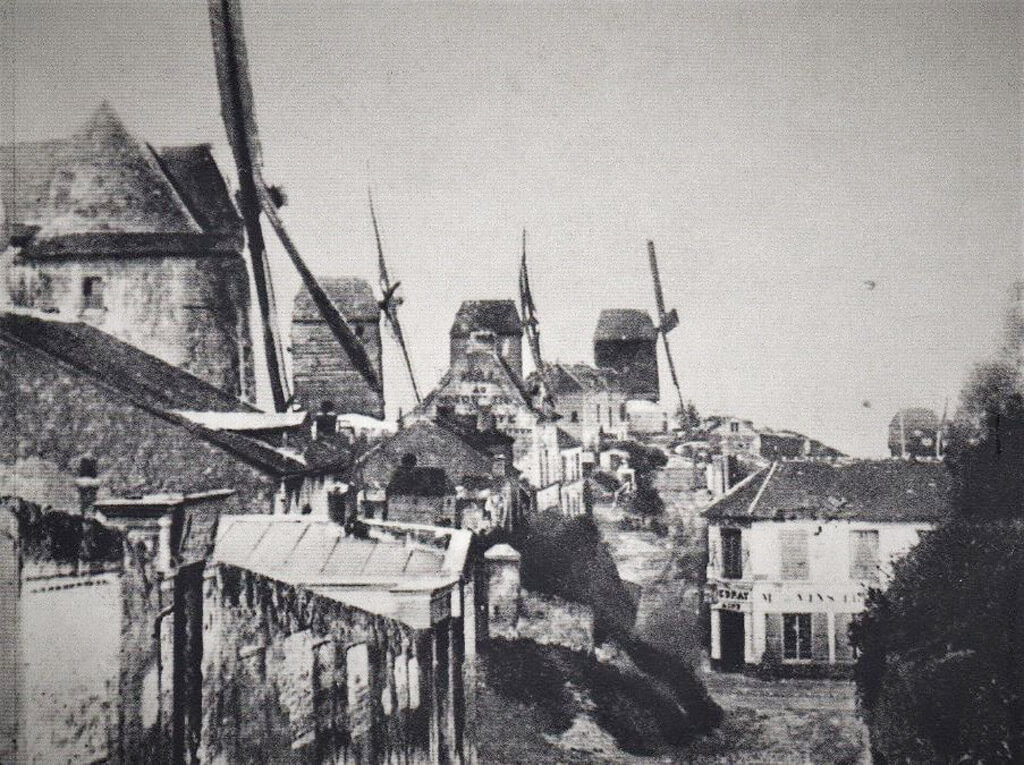
The history of Moulin Rouge is long. The building sits on the grounds of the former Bal de la Reine Blanche, which closed in 1885. The Moulin Rouge’s design was entrusted to Adolphe Willette, a famous cartoonist, whose idea was to create a place reminiscent of the countryside of Montmartre, where there were still around 20 windmills.
Moulin Rouge means “Red Windmill” in French, and the building is just that! The bright red color symbolizes celebration and luxury. If you take this self-guided Montmartre walking tour, you can still see one of these windmills, Moulin of the Blute-Fin, built around 1622.
2. 6 October 1899: The Opening
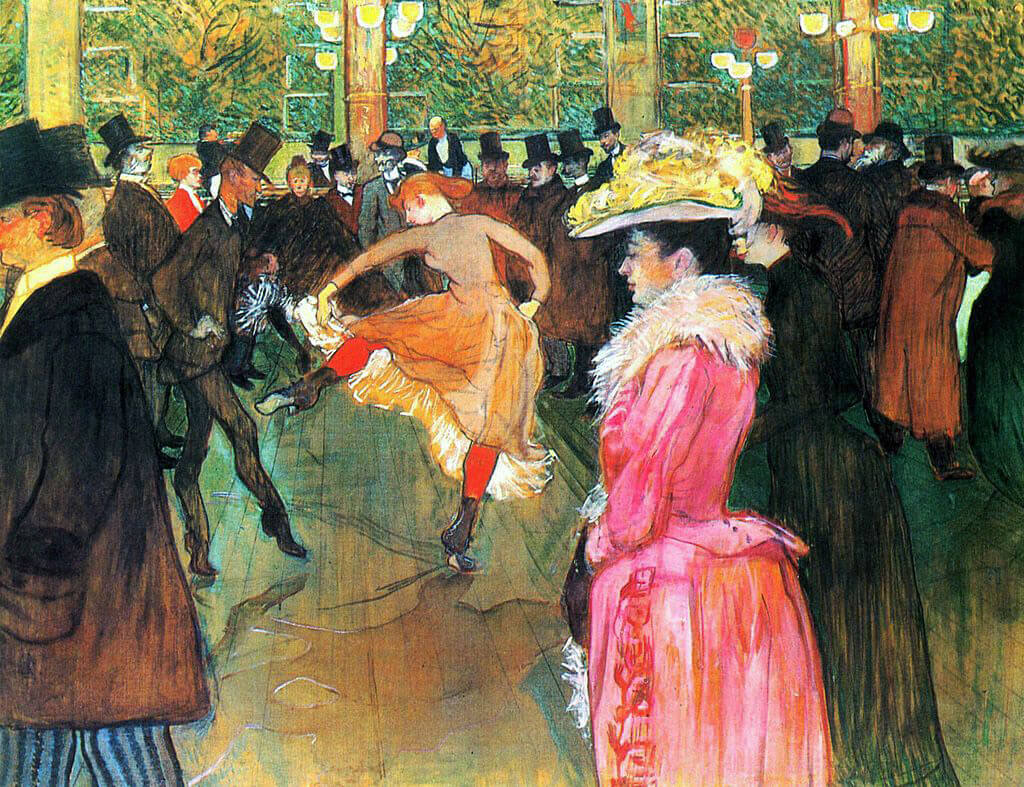
On 6 October 1899, there was a traffic jam of horse-drawn carriages in front of 82 Boulevard de Clichy, at the foot of Montmartre. Nobody wanted to miss the opening of the Moulin Rouge, the new cabaret in Paris!
Its founders did not choose the red color by chance: it was not easy to miss a building like that! In addition, the Moulin Rouge was the first building in the whole city to use electricity, a marvelous new technology. This is how the windmill’s arms spun around, and the building was ablaze with electric lightbulbs.
The doors opened at 8 p.m., and Paris was about to become the world’s party capital.
3. The Moulin Rouge was One of the Largest Entertainment Facilities in Paris
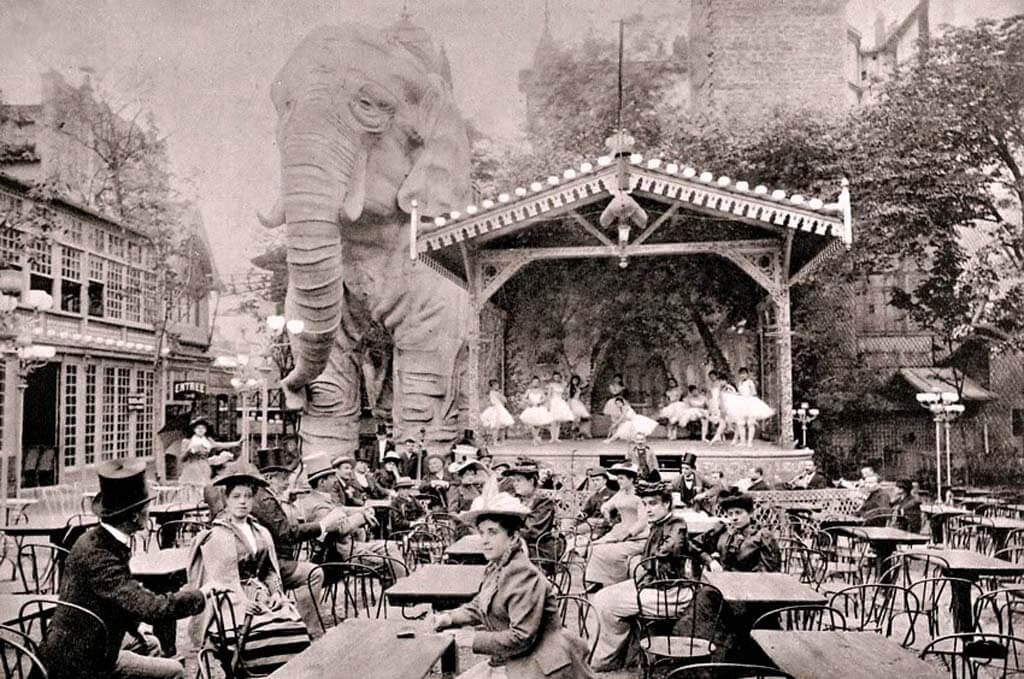
To enter Le Bal du Moulin Rouge, guests had to pay 50 cents. The place was extravagant, with a huge dance floor and a back garden with donkey rides to entertain female guests.
The garden was also home to a giant elephant made of plaster which was recycled from the 1889 World’s Fair. The animal housed in its paw a small room reserved for men (a fumoir) where a belly dancer performed.
From 10 p.m., about twenty young women came on stage and set to the furious rhythm of Offenbach’s music; they lifted their petticoats and showed their panties. They were the “cancaneuses,” experts of this new dance named cancan, which enjoyed great success despite the censorship by the State and Church. The cancaneuses had quirky names like Grille d’Egoût, Nini Patte en l’Air, la Môme Fromage…

The star, however, was La Goulue, who lifted her legs like nobody else. She even became the emblem of the Moulin Rouge under the brush of the painter Toulouse Lautrec.
The bourgeoisie mingled with the riffraff at the Moulin Rouge and out of sight. They met, they drank, and they laughed in front of the Pétomane (an artist whose main ability was to fart in a creative and musical way). On the stage and ass to the air, his fart melodies caused general hilarity!
The first Moulin Rouge reviews (that’s the name for the cabaret shows) began on 19 April 1890 under the name of Circassiens et Circassiennes.
In 1893, the Bal des Quat’z’Arts (one of the most infamous Moulin Rouge reviews) caused a scandal with its parade of naked Cleopatra surrounded by also naked young girls.
The last ball at the Moulin-Rouge took place on 29 November 1902. Then, the place was transformed into a concert theater.
4. The Current Building Isn’t the Original Moulin Rouge
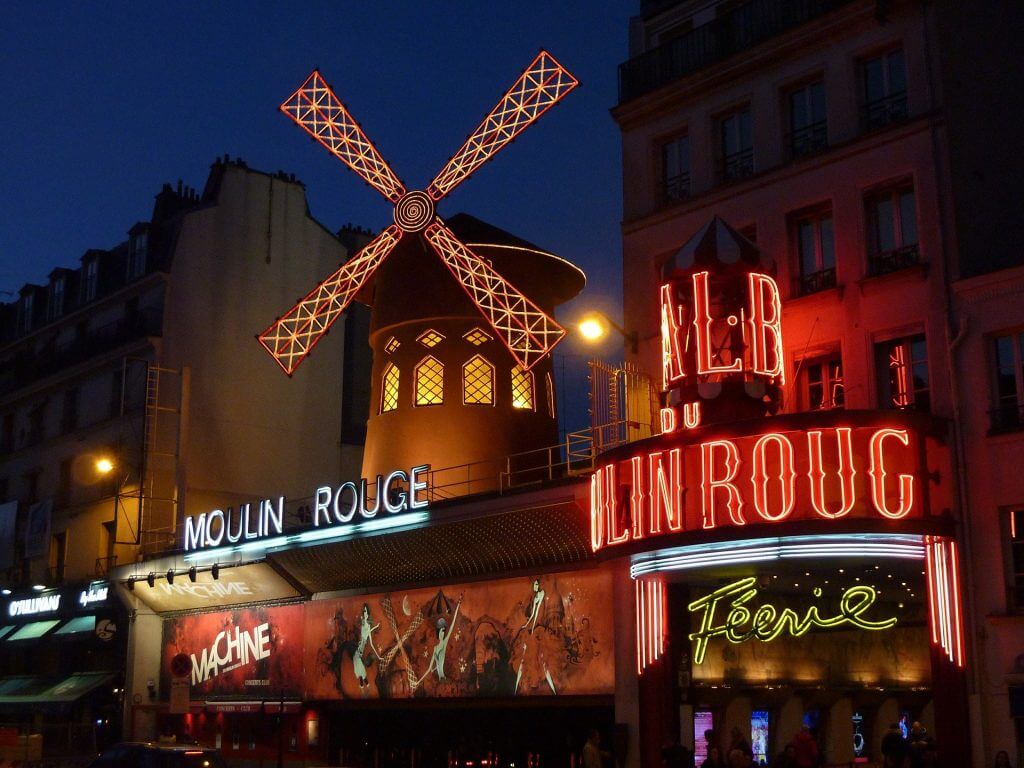
On 27 February 1915, a fire devastated the Moulin Rouge, the reconstruction of which only began in 1921. The Moulin Rouge was rebuilt in 1921 identically, but the elephant had disappeared sometime beforehand. The garden had also been gradually fazed out.
The current Moulin Rouge hall was inaugurated on 22 June 1951, and apart from the recent heightening of the ceiling, nothing has changed since then.
The tree-shaped pillars that support the striped hangings refer to the Moulin Rouge’s early-hours garden.
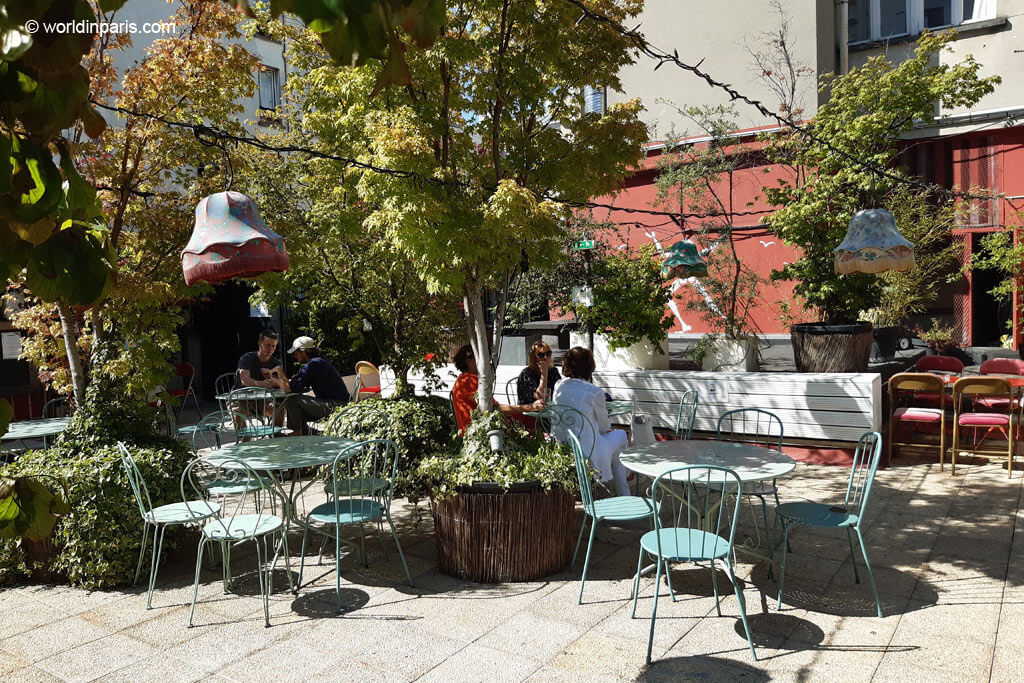
Today, people can experience something close to the ambiance of the former garden at the cabaret’s hidden bar, Le Bar à Bulles, accessible via the alley to the left of the cabaret (4, Cité Veron, Paris). This is one of my favorite places of hidden Montmartre, and you can also read about it in this post.
5. Many Famous Performing Artists have Graced its Stage
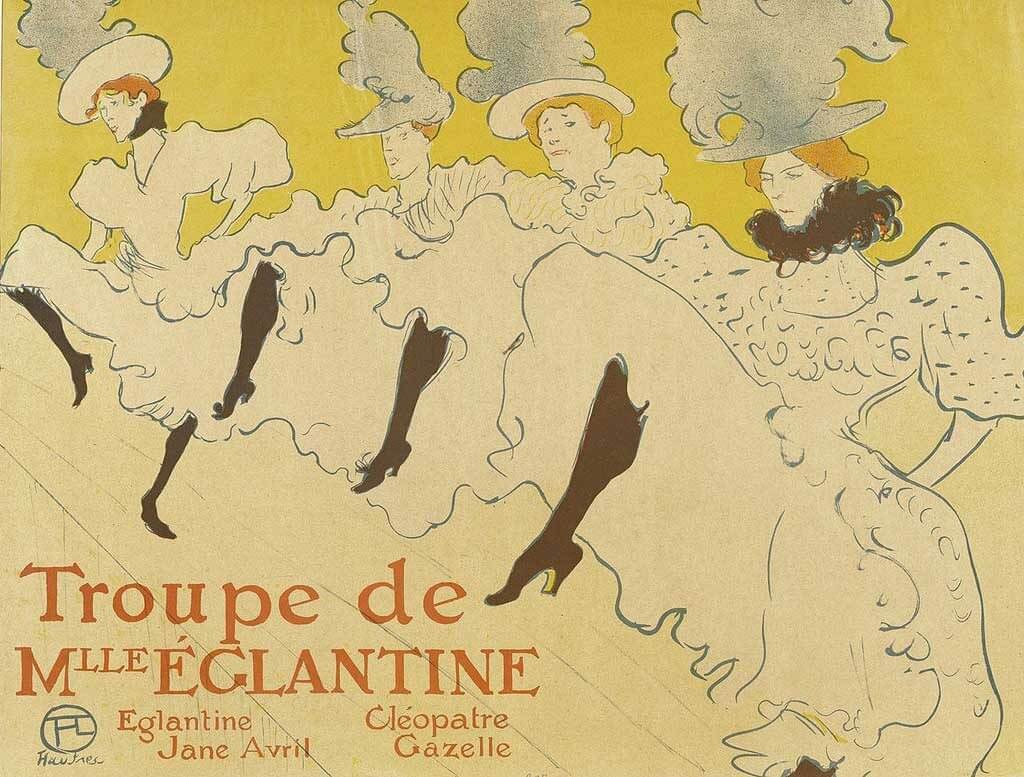
The Moulin Rouge history is full of famous performing artists. After the First World War, the businessman Francis Salabert took control of the Moulin Rouge. He entrusted Jacques-Charles, the number 1 of reviews of the time, with the task of reviving the colors of the cabaret.
The Moulin Rouge then took off again thanks to stars such as Gina Palermo, Mistinguett, Jeanne Aubert, and Maurice Chevalier, as well as the presentation, for the first time in Paris, of American revues with the Hoffmann Girls.
During the 1930s, the Moulin Rouge was also used for concerts. In addition to cabaret-related personalities like Edith Piaf and Josephine Baker, the cabaret’s stage has played host to Charles Trenet, Charles Aznavour, Line Renaud, Gina Rogers, Frank Sinatra, Liza Minelli, Ella Fitzgerald, Ray Charles, Charles Chaplin, and more.
6. After “Frou-Frou,” the Names of All the Moulin Rouge Reviews Begin with “F”
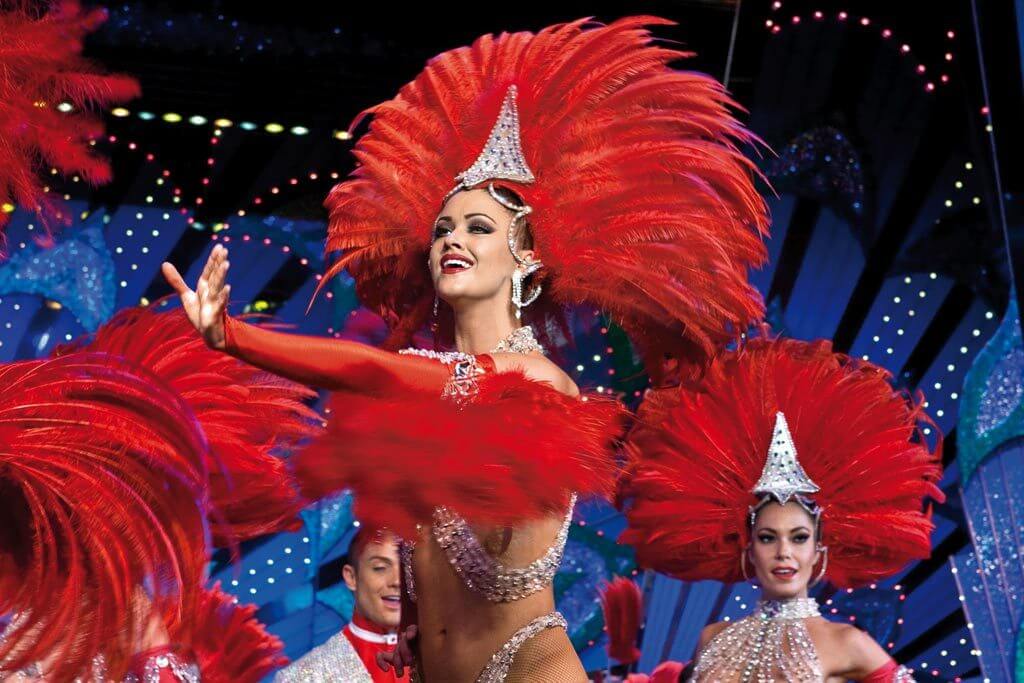
This is one of the most interesting Moulin Rouge facts, the names of its reviews! In November 1957, Doris Haug arrived at the Moulin Rouge and founded the Doris Girls troupe. In March 1962, she created the review Cancan, then Frou-Frou, with the help of the choreographer Ruggero Angeletti.
Following the success of the Moulin Rouge review Frou-Frou, by superstition, all the Moulin Rouge reviews begin with the letter F. Nine reviews have been created since Frou-Frou: Frisson, Fascination, Fantastic, Festival, Follement, Frénésie, Femmes Femmes Femmes, Formidable and current Féérie.
It takes two years to create a new Moulin Rouge review, resulting in a five-week closure for rehearsals.
Féérie is the 10th and last review to date. The budget for the review Féérie is estimated at 10 million euros, including 4 million euros for some 1,000 costumes and 800 pairs of shoes.
7. The Australians Make Up More than a Third of the Doris Girls
The Moulin Rouge’s troupe has 80 artists of 14 nationalities, of which around 20 artists are men. The majority of the artists are Australians, and Australians also make up more than a third of the Doris Girls.
At least three casting sessions are organized annually, in which around 600 dancers participate each time for sometimes only two vacancies. The height required to join the dance troupe is at least 1.75m for women and 1.85m for men.
All troupe members are trained in classical dance and continue to take lessons every week. They must be fit (they dance 6 hours a day, six days a week) and strong (some costumes are very heavy).
English is the official language at the Moulin Rouge, but all the troop members receive French lessons.
8. The Moulin Rouge Owns Unique Know-How of Costume-Making
To preserve the unique know-how of costume-making, the Moulin Rouge bought the historic Atelier Mine Vergès for costumes, the Maison Fevrier for feathers, the Maison Clairvoy for shoes, and Atelier Valentin for embroidery.
9. All the Costumes are Hand-Made (and Amazing!)
All outfits are by Maison Vergès, sewn on-site in the Moulin Rouge, and by hand!
The atelier couture is open from 8.30 a.m. to 11.3.0 pm. There are day and night teams to sew and repair costumes non-stop.
The most elaborate costumes can weigh up to 5 kg, while 150 m of tissue is necessary for a frou-frou (the typical cancan skirt). All the crystals used for the costumes are Swarovski.
Three kilometers of ostrich feather boas come out of Maison Fevrier every year. For a 3.50 m boa, it takes around 16 months of manufacturing.
10. The Moulin Rouge is a Referenced Place for the French Gastronomy
In September 2017, the Gault & Millau (a demanding gastronomic guide referencing the best restaurants since 1972) made the Moulin Rouge’s table one of the capital’s musts thanks to Chef Le Quellec’s inventive cuisine made of fresh produce. This was definitely an important milestone in the history of Moulin Rouge!
Chef David Le Quellec arrived at the Moulin Rouge in 2015. To meet this culinary challenge, Le Quellec put together a team of 25 people in the kitchen and 5 people to assist the Pastry Chef. All the plates are prepared on-site.
There are different menus at Moulin Rouge Paris and one of these menus is always vegan. They all consist of an entrée (starter), main dish, and dessert and include 1/2 bottle of champagne wine that you can swap for two soft drinks of your choice. Additional drinks will be charged apart.
Who said that the food in the Parisian cabarets is not good? Click here to book the Moulin Rouge cabaret show with dinner.
Do you get better seats with dinner at Moulin Rouge?
All the seats at the Moulin Rouge Paris have a good view of the stage because of the shape of the room and the rake of the floor. You cannot reserve specific seats in advance, so try to arrive as early as possible.
Those who book the Moulin Rouge show with dinner, however, get better seats closer to the stage.
Be warned, they DO ask a few people to participate during the show, and your proximity to the stage is a factor (but you can always say “non, merci”).
Other Quirky Moulin Rouge Facts
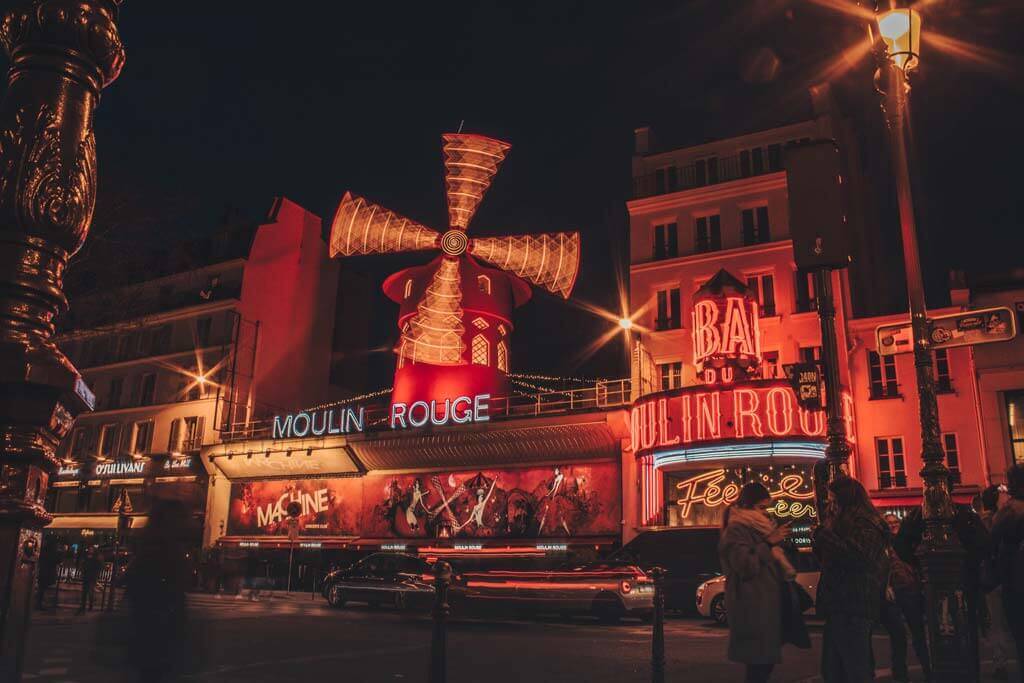
The Moulin Rouge Paris is the world’s largest champagne consumer (private company), with 240,000 champagne bottles opened per year. Also, 50,000 wine bottles are served per year.
The Moulin Rouge has inspired many films, including Moulin Rouge by Yves Mirande in 1939, Moulin Rouge by John Huston in 1952, French Cancan by Jean Renoir in 1954, and Moulin Rouge by Baz Luhrmann in 2001.
The Moulin Rouge produces and markets its own honey. The cabaret has five beehives located on the terrace.
The Moulin Rouge holds five world records related to French cancan:
- The most juggling catches in 30 seconds (128), achieved by Moulin Rouge performer Mario Berousek (Czech Republic) at the Moulin Rouge Paris in 2010
- The most rotations whilst juggling in one minute (735), achieved by Moulin Rouge performer Mario Berousek (Czech Republic) at the Moulin Rouge Paris in 2010
- The most simultaneous “demi-grand rond de jambe” cancan kicks by a single chorus line in 30 seconds (29 kicks), achieved by the Doris Girls at the Moulin Rouge Paris in 2014
- The most times to position one leg behind the head in 30 seconds (30 times), achieved by Adonis Kosmadakis (Greece) at Moulin Rouge Paris in 2014
- The greatest number of positions of the leg around the head (30 in 30 seconds by solo dancer Adonis Kosmadakis)
- The most serpillères-spinning splits in 30 seconds (36), achieved by Nicolas Pihiliangegedara (France) at Moulin Rouge Paris in 2014
What to Do near the Moulin Rouge in Paris?
- Montmartre Walking Tour
- Place du Tertre
- Musée de Montmartre
- Musée Dalí
- Sacré-Coeur Basilica
- The Love Wall

